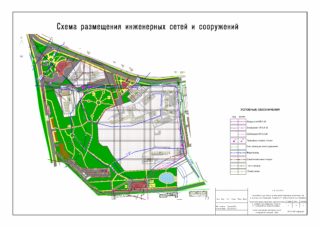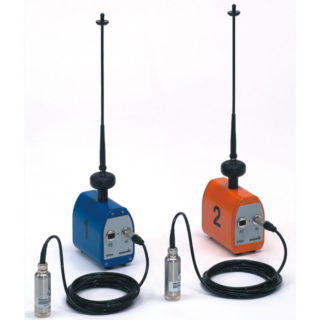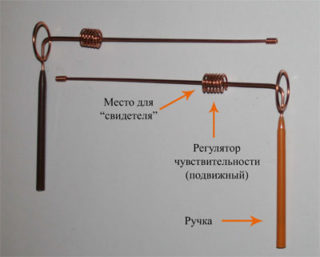When carrying out design and construction work, it is important to know where the underground highways are, so as not to destroy them. Finding a sewer or water pipe underground is not difficult if you approach the search correctly.
The need for search work

Construction begins with the identification of underground pipelines and electrical cables. Even if the highway layouts are available, they are not always correct. Before starting construction and at the design stage, the accuracy of the data is checked.
Identifying the location of underground water and sewer pipes is required not only in the construction of buildings. Knowing where the highways are located is necessary in such cases:
- creation of technical documents;
- formation of working drawings;
- development of a topographic plan of the site;
- reconstruction or repair in case of leaks.
Communication systems, laid with official permission, are registered in the architectural and urban planning departments, are included in plans and technical documents with reference to the borders of adjacent territories.
Before embarking on excavations, they contact the appropriate authorities to obtain background information on the availability of communication highways. The document must indicate the exact location with reference and the depth of the bed. The information is not always accurate, so it is checked against the readings of research instruments.
Devices for detecting underground utilities

Different devices are used to find waterways in the ground. The choice depends on the pipe material. The depth and temperature of the liquid in the communication lines are taken into account. Metal lines, laid no deeper than one and a half meters, are detected by a metal detector. The hot water supply is detected using a thermal imager or a non-contact thermometer.
To find a plastic or metal pipe with water in the ground, they use acoustic search methods. Three types of devices work according to this principle:
- Sensitive microphone. The water flowing out of the breakdown creates noise under the pressure. A metal pipe gives a high-frequency impulse, a plastic water pipe gives a low-frequency one. A similar method is often used to identify the place of leakage: there the intensity of the sound increases.
- Correlation Leak Finder. Microphones are installed at two points of the water supply line and carry out frequency sound transmission. The device analyzes the vibroacoustic indicators of the noise of flowing water and calculates the location of the leak. This method is effective for metal pipes.
- An acoustic sensor that reacts to the slightest vibration of a pipe in the ground. It is used to search for communication lines at shallow depths and a distance of up to one hundred meters from the striker.
Acoustic devices are usually used when repairing an existing pipeline.
The method of electromagnetic induction is more universal. The equipment used in this method determines the location and depth of pipelines made of various materials, even asbestos.
The principle of operation of the device is to measure electromagnetic radiation, which changes due to foreign objects in the upper layers of the soil.The induction field can be created by the generator itself. This method is the most effective, since it allows you to detect communication lines with a depth of up to 30 meters. The sensor also shows what the pipes are made of.
Self search

If it is necessary to identify the position of underground pipes, but there are no instruments, they use the old method - dowsing. The method did not find support from scientists, but is popular with millions of people in different countries.
To use the dowsing method, you need to make a frame in the shape of the letter "L" from welding electrodes or steel wire. The length of the handles is about 150 millimeters, the search sites are about 350 millimeters.
Hold the frames straight in front of them by the handles. "Searchers" should be directed forward parallel to each other at a distance of about 15 cm. Do not squeeze the handles too much, the rotation of the frames should be free.
Before searching, set up frames so that they respond correctly to objects. To do this, you need to mentally ask a question to which there is only an affirmative answer. The frames must cross. With a question that has a 100% negative answer, the search sites will go to the sides.
After preparing the framework, you need to tune in to search for the required highway. It is important to determine exactly what you want to find: an asbestos, metal or plastic structure, a plumbing or sewer pipe underground using bent electrodes.
Further actions are as follows:
- Determine the direction where the pipeline is likely to be and move slowly. If a pipe is found, the frames form a cross.
- Keep moving forward. If you deviate from the desired area, the frames will disperse.
- Mark the location you find, then search a few more points to determine the exact location of the pipe.
The dowsing method allows you to determine the location of not only pipes and electrical cables. For example, you can find a well hatch hidden under ice and snow.
Attracting professionals
To get an accurate result in the search for a water supply pipeline located underground, the best option would be to contact a specialized organization. The actions of professionals, work experience and the use of high-tech measuring instruments help to reduce to zero possible accidents during mechanized excavation work.
The advantages of contacting specialists are that the contractor:
- determines the scope of work at the request of the customer, draws up design and estimate documentation, adheres to the deadline for the delivery of the order;
- independently agrees with the authorities on the preliminary data on the location of previously conducted communication highways;
- guarantees the quality of the work done;
- uses expensive specialized equipment.
In accordance with building codes, pipelines must be located at least half a meter below the freezing point of the earth, and a simple metal detector is unlikely to detect them.
Upon completion of the work, the customer receives an accurately drawn up plan for the location of underground pipeline branches with reference to neighboring sections or a red line. It will be needed in the future when building a house and other buildings.
Combining the above methods, you can find working or abandoned communication lines with maximum accuracy, regardless of how deep they are. This will prevent problems while working on the construction site or help locate a pipeline break.








